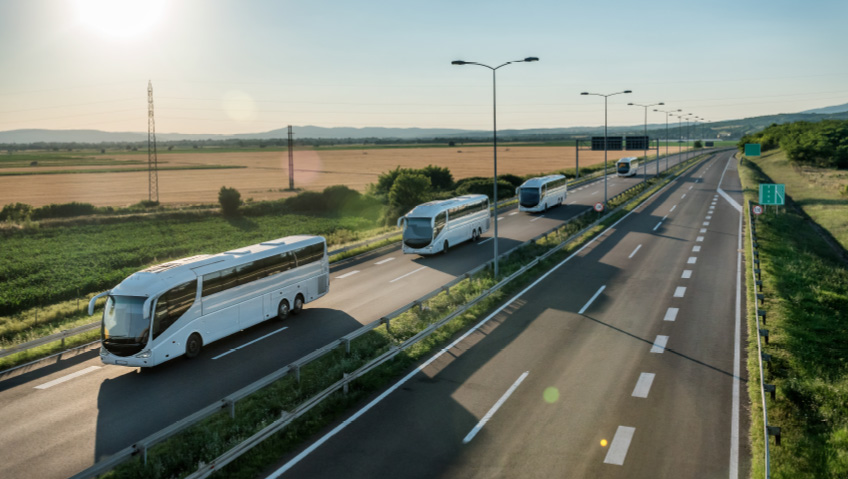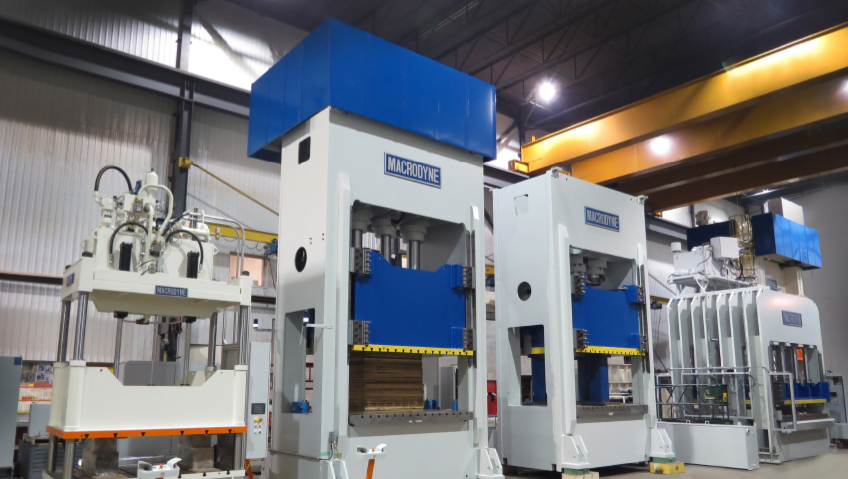In the past few years, significant changes have occurred in manufacturing the new generation of mass transit vehicles such as buses, airplanes, trains, and more. The drive toward zero-carbon emissions and clean energy appears to be gathering momentum.
In March of this year, Vice President Kamala Harris informed Americans of the Biden-Harris administration’s intention to transform public transport across the country by moving toward the world of clean energy. Its mission is to eliminate greenhouse gasses currently produced by fossil fuel combustion engines used in mass and public transport, civil works, and port activities. As the combination of private and public transport contributes twenty-seven percent of the country’s total pollution emissions, according to the Environmental Protection Agency (EPA), this is a watershed moment for the United States. But where will the money and such vehicles come from?
Firstly, the nationwide mission is made possible by the Bipartisan Infrastructure Investment and Jobs Act, and according to a White House statement, American Rescue Plan investments will fund it. The gargantuan project is said to firstly benefit children, especially those from disadvantaged communities who have historically been at the rough end of heavy-vehicle pollution.
In addition, the mission promises to become a hold-all for up-skilling existing workers, training new people, improving salaries and wages in related positions, providing more union employment, and improving national health in the United States while turning the nation into a global trailblazer in facing climate change head-on.
There are several moving parts to the overall mission. Firstly, the act significantly raises the financial aid bar with its escalation of $5.5 billion, a ten-fold expansion of the Low- or No-Emission Transit Vehicle Program’s funding of the last half-decade. The Department of Transportation (DOT) is also contributing $1.1 billion for the year, boosted by another $372 million that will go toward the Buses and Bus Facilities Program.
Alongside this funding, another $2.2 billion, contributed by the DOT, will go toward over thirty transit agencies in nearly twenty states as part of the American Rescue Plan. Further financial power will be added to the nation’s coffers with electric mass transit and civil vehicles fabricated on home soil. Other grants will help pay for the conversion across several more sectors.
Things are, at last, looking up for electric vehicle (EV) manufacturers who have been researching, experimenting, building, and rebuilding prototypes for decades. No sooner had the White House released its statement on March 7 than Blue Bird Corporation marked the biggest fleet of electric buses ever requested from its facility in Macon, Georgia. The client was Modesto City Schools from California. Looking to transform its existing fleet into a sleek yellow electric one, the group ordered thirty vehicles to replace 50 percent of its buses. Predictions are that it can now save around a quarter of a million dollars in diesel annually.
Blue Bird Corporation also announced a new re-power program whereby specific models in its low-emissions fuel-combustion engine range of buses can be electrified in collaboration with its partner, Lightning eMotors. However, there are also other important players in the electric bus field. These include GreenPower Motor Company Inc., COBUS Industries GmbH, ElDorado National California Inc., and Nova Bus Corporation.
Schools are not the only organizations looking to increase their zero-emissions performance. Electrifying public transit buses are also on the government’s to-do list. Californian company Proterra stepped up as a major contributor in this area, releasing a brand new ZX5 electric bus transit model in collaboration with Eldorado National California (ENC) that will be in use sometime next year.
With a range of proprietary electrification options, this manufacturer is making the green transition easy for fleets. Its new bus sports a four-speed EV transmission for the best power performance that any of its buses have ever offered. As a result, auto and bus manufacturers are lining up for its technology.
As the country seeks to manufacture better transit vehicles, there are also airplanes and jets to consider. Cape Air, headquartered in Massachusetts is doing its best to join the race to battery-powered aviation. The 400-flights-to-40-cities airline invested in over seventy passenger jets manufactured by Eviation Aircraft of Arlington, Washington, after the news went public as early as 2018.
“Cape Air remains committed to sustainability, growth, and innovation, and our partnership with Eviation allows for these commitments to become a reality,” Linda Markham, its President and Chief Executive Officer told CBS news in April this year. The new nine-seat plane, Eviation Alice, is reported to cover around 500 miles before the battery has to be recharged. Plus, it can fly in the same conditions as piston and turbine planes, according to Eviation. Although Cape Air has not launched the new fleet, its maiden flights are predicted for later this year.
More of our railways are now carrying electric trains. A fleet of 471 cars entered service on the Metro-North Railroad New Haven Line and the CTrail Shore Line East in 2011. Kawasaki is fabricating a further sixty M8 electric multiple-unit trains for Shore Line East. The coaches run as silently as a whisper and save the atmosphere from harmful emissions. Passengers can look forward to improved comfort and guilt-free rides from New Haven to New London with a connection to New York City via Metro-North’s New Haven Line which has been outfitted with electric trains for a decade.
But there is a possibility of a new type of public transport on the horizon with the development of Virgin’s Hyperloop One, currently focused on moving cargo, and SpaceX’s passenger version of the technology. Elon Musk has been promoting his idea of a hyperloop mass transportation system for over a decade. His vision for the future of public transport involves autonomous electric pods travelling at more than 600 miles per hour, turning an ordinary thirty-to-forty-minute train ride into one of less than ten minutes and a three-hour old-fashioned train ride into one of under half an hour.
Musk announced this past April that his tunnel firm, The Boring Company, will start building a test tunnel soon. In 2021, The Boring Company was issued with a permit to turn its Vegas Loop system into almost thirty miles with over forty-nine stations taking passengers along the Las Vegas Strip and beyond as far as McCarran International Airport.
As manufacturing returns to the United States and more exciting developments are underway, the drive for security could mean that the minerals needed for battery fabrication could soon be sourced locally. In light of this, it will be interesting to follow how supply chains are designed to ensure absolute supply safety over the next decade or so.
While there are still areas that need to be figured out across several fields, especially in terms of scalability, what is certain is that whether we travel by trains, boats, or planes, the means of powering and manufacturing mass transit is evolving rapidly.






